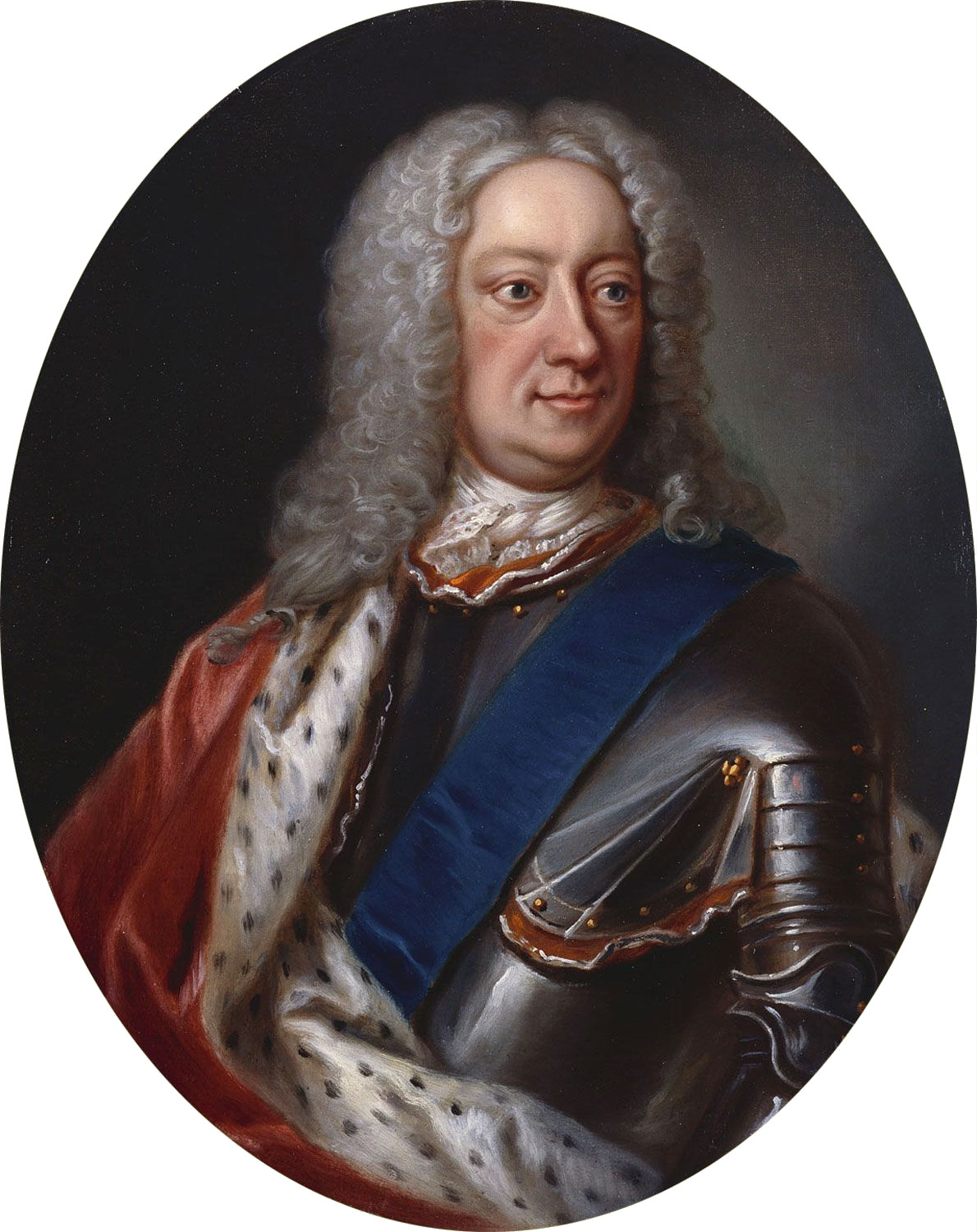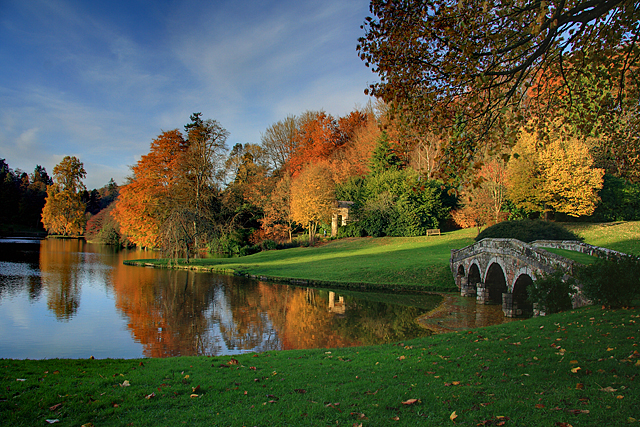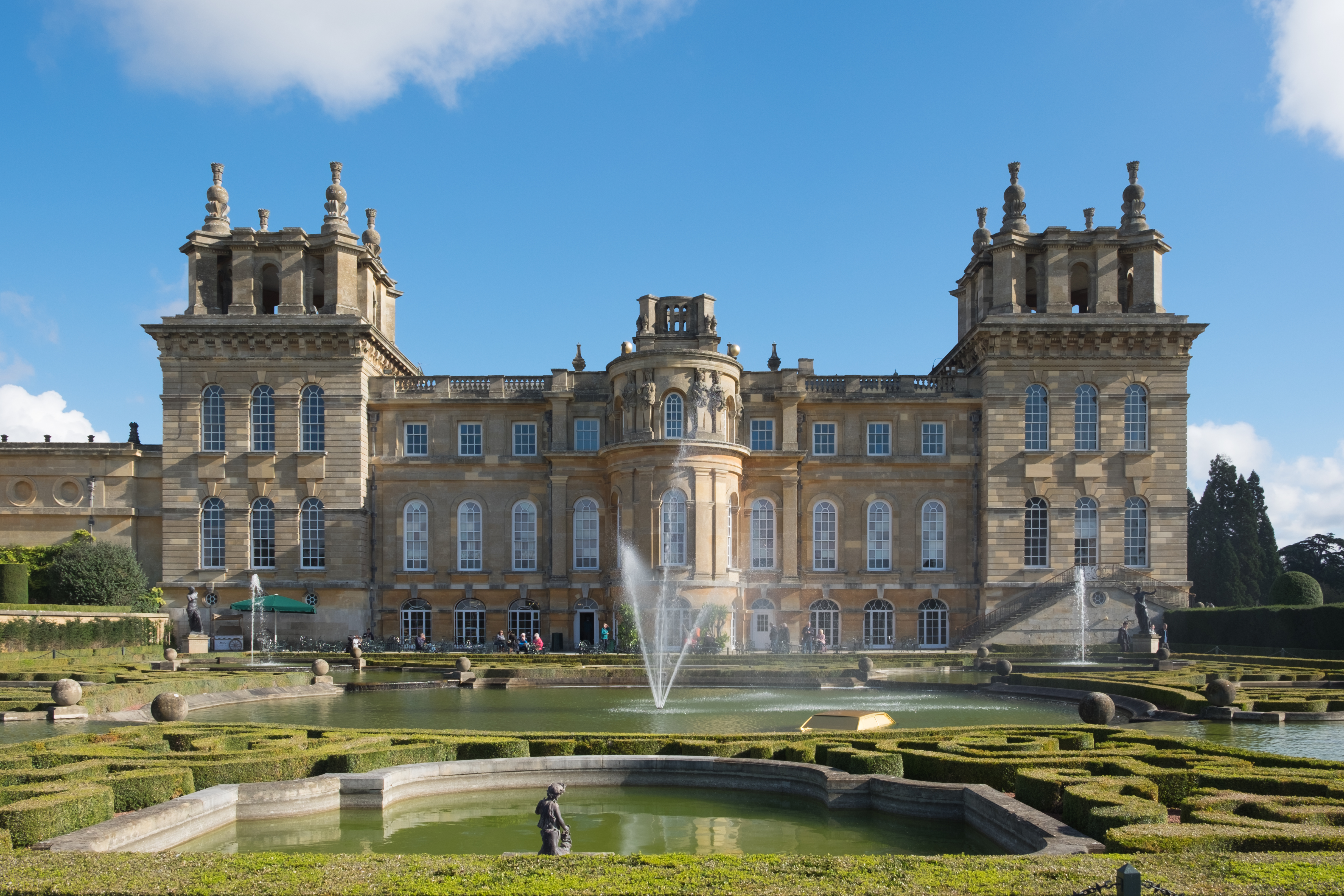|
Claremont (country House)
Claremont, also known historically as 'Clermont', is an 18th-century Palladian mansion less than a mile south of the centre of Esher in Surrey, England. The buildings are now occupied by Claremont Fan Court School, and its landscaped gardens are owned and managed by the National Trust. Claremont House is a Grade I listed building. Claremont estate The first house on the Claremont estate was built in 1708 by Sir John Vanbrugh, the Restoration playwright and architect of Blenheim Palace and Castle Howard, for his own use. This "very small box", as he described it, stood on the level ground in front of the present mansion. At the same time, he built the stables and the walled gardens, also probably White Cottage, which is now the Sixth Form Centre of Claremont Fan Court School. In 1714, he sold the house to the wealthy Whig politician Thomas Pelham-Holles, Earl of Clare, who later became Duke of Newcastle and served twice as Prime Minister. The Earl commissioned Vanbrugh to ... [...More Info...] [...Related Items...] OR: [Wikipedia] [Google] [Baidu] |
Façade
A façade or facade (; ) is generally the front part or exterior of a building. It is a loanword from the French language, French (), which means "frontage" or "face". In architecture, the façade of a building is often the most important aspect from a design standpoint, as it sets the tone for the rest of the building. From the engineering perspective, the façade is also of great importance due to its impact on Efficient energy use, energy efficiency. For historical façades, many local zoning regulations or other laws greatly restrict or even forbid their alteration. Etymology The word is a loanword from the French , which in turn comes from the Italian language, Italian , from meaning 'face', ultimately from post-classical Latin . The earliest usage recorded by the ''Oxford English Dictionary'' is 1656. Façades added to earlier buildings It was quite common in the Georgian architecture, Georgian period for existing houses in English towns to be given a fashionable new f ... [...More Info...] [...Related Items...] OR: [Wikipedia] [Google] [Baidu] |
Thomas Pelham-Holles, 1st Duke Of Newcastle
Thomas Pelham-Holles, 1st Duke of Newcastle upon Tyne, 1st Duke of Newcastle-under-Lyne (21 July 1693 – 17 November 1768) was an English Whigs (British political party), Whig statesman who served as Prime Minister of the United Kingdom, Prime Minister of Great Britain, and whose official life extended throughout the Whig supremacy of the 18th century. He is commonly known as the Duke of Newcastle. A protégé of Robert Walpole, he served under him for more than 20 years until 1742. He held power with his brother, prime minister Henry Pelham, until 1754. He had then served as a Secretary of State (United Kingdom), Secretary of State continuously for 30 years and dominated British foreign policy. After Henry's death, Newcastle was prime minister for six years in two separate periods. While his first premiership was not particularly notable, Newcastle precipitated the Seven Years' War, and his weak diplomacy cost him his premiership. After his second term, he served briefly in ... [...More Info...] [...Related Items...] OR: [Wikipedia] [Google] [Baidu] |
Roger Turner (garden Designer)
Roger Turner is a British garden designer and writer of gardening-related non-fiction books. He trained as an architect, and now practises as a garden designer in Gloucestershire."Davidson Symposium to tackle growing problems" Farm & Garden, '' The Times-News'', 29 January 2007, p. 6C. He lectures widely on garden subjects, and is the author of several gardening books. Turner has given talks in the UK, Ireland and the US on a wide range of gardening subjects, specialising in perennials of all kinds, garden design and garden history. He trained as an architect and now works as a |
William Kent
William Kent (c. 1685 – 12 April 1748) was an English architect, landscape architect, painter and furniture designer of the early 18th century. He began his career as a painter, and became Principal Painter in Ordinary or court painter, but his real talent was for design in various media. Kent introduced the Palladian style of architecture into England with the villa at Chiswick House, and also originated the 'natural' style of gardening known as the English landscape garden at Chiswick, Stowe Gardens in Buckinghamshire, and Rousham House in Oxfordshire. As a landscape gardener he revolutionised the layout of estates, but had limited knowledge of horticulture. He complemented his houses and gardens with stately furniture for major buildings including Hampton Court Palace, Chiswick House, Devonshire House and Rousham. Early life Kent was born in Bridlington, East Riding of Yorkshire, and baptised on 1 January 1686, as William Cant. His parents were William and ... [...More Info...] [...Related Items...] OR: [Wikipedia] [Google] [Baidu] |
Charles Bridgeman
Charles Bridgeman (1690–1738) was an English garden designer who helped pioneer the naturalistic landscape style. Although he was a key figure in the transition of English garden design from the Anglo-Dutch formality of patterned parterres and avenues to a freer style that incorporated formal, structural and wilderness Wilderness or wildlands (usually in the plurale tantum, plural) are Earth, Earth's natural environments that have not been significantly modified by human impact on the environment, human activity, or any urbanization, nonurbanized land not u ... elements, Bridgeman's innovations in English landscape architecture have been somewhat eclipsed by the work of his more famous successors, William Kent and Lancelot "Capability" Brown. Career Little is recorded of the early life of Charles Bridgeman. He was born in 1690 and raised in modest circumstances. His father was a gardener who is reported to have worked at Wimpole Hall in Cambridgeshire for the Ea ... [...More Info...] [...Related Items...] OR: [Wikipedia] [Google] [Baidu] |
Landscape Gardener
Landscape architecture is the design of outdoor areas, landmarks, and structures to achieve environmental, social-behavioural, or aesthetic outcomes. It involves the systematic design and general engineering of various structures for construction and human use, investigation of existing social, ecological, and soil conditions and processes in the landscape, and the design of other interventions that will produce desired outcomes. The scope of the profession is broad and can be subdivided into several sub-categories including professional or licensed landscape architects who are regulated by governmental agencies and possess the expertise to design a wide range of structures and landforms for human use; landscape design which is not a licensed profession; site planning; stormwater management; erosion control; environmental restoration; public realm, parks, recreation and urban planning; visual resource management; green infrastructure planning and provision; and private estate an ... [...More Info...] [...Related Items...] OR: [Wikipedia] [Google] [Baidu] |
English Garden
The English landscape garden, also called English landscape park or simply the English garden (, , , , ), is a style of "landscape" garden which emerged in England in the early 18th century, and spread across Europe, replacing the more formal, symmetrical French formal garden which had emerged in the 17th century as the principal gardening style of Europe. The English garden presented an idealized view of nature. Created and pioneered by William Kent and others, the "informal" garden style originated as a revolt against the architectural garden and drew inspiration from landscape paintings by Salvator Rosa, Claude Lorrain, and Nicolas Poussin, as well as from the classic Chinese gardens of the East, which had recently been described by European travellers and were realized in the Anglo-Chinese garden.Bris, Michel Le. 1981. ''Romantics and Romanticism.'' Skira/Rizzoli International Publications, Inc. New York 1981. 215 pp. age 17Tomam, Rolf, editor. 2000. ''Neoclassicism and ... [...More Info...] [...Related Items...] OR: [Wikipedia] [Google] [Baidu] |
Landscape Design
Landscape design is an independent profession and a design and art tradition, practiced by landscape designers, combining nature and culture. In contemporary practice, landscape design bridges the space between landscape architecture and garden design. Design scope Landscape design focuses on both the integrated master landscape planning of a property and the specific garden design of landscape elements and plants within it. The practical, Design, aesthetic, Horticulture, horticultural, and environmental sustainability are also components of landscape design, which is often divided into hardscape design and softscape design. Landscape designers often collaborate with related disciplines such as architecture, civil engineering, surveying, Landscaping, landscape contracting, and artisan specialties. Design projects may involve two different professional roles: landscape design and landscape architecture. * Landscape design typically involves artistic composition and artisanship, ... [...More Info...] [...Related Items...] OR: [Wikipedia] [Google] [Baidu] |
St Paul's Cathedral
St Paul's Cathedral, formally the Cathedral Church of St Paul the Apostle, is an Anglican cathedral in London, England, the seat of the Bishop of London. The cathedral serves as the mother church of the Diocese of London in the Church of England. It is on Ludgate Hill at the highest point of the City of London. Its dedication in honour of Paul the Apostle dates back to the original church on this site, founded in AD 604. The high-domed present structure, which was completed in 1710, is a Listed Building, Grade I listed building that was designed in the English Baroque style by Sir Christopher Wren. The cathedral's reconstruction was part of a major rebuilding programme initiated in the aftermath of the Great Fire of London. The earlier Gothic cathedral (Old St Paul's Cathedral), largely destroyed in the Great Fire, was a central focus for medieval and early modern London, including Paul's walk and St Paul's Churchyard, being the site of St Paul's Cross. The cathedral is o ... [...More Info...] [...Related Items...] OR: [Wikipedia] [Google] [Baidu] |
Windsor Castle
Windsor Castle is a List of British royal residences, royal residence at Windsor, Berkshire, Windsor in the English county of Berkshire, about west of central London. It is strongly associated with the Kingdom of England, English and succeeding British royal family, and embodies almost a millennium of architectural history. The original castle was built in the 11th century, after the Norman invasion of England by William the Conqueror. Since the time of Henry I of England, Henry I (who reigned 1100–1135), it has been used by the reigning monarch and is the longest-occupied palace in Europe. The castle's lavish early 19th-century state apartments were described by the art historian Hugh Roberts (art historian), Hugh Roberts as "a superb and unrivalled sequence of rooms widely regarded as the finest and most complete expression of later Georgian taste".Hugh Roberts, ''Options Report for Windsor Castle'', cited Nicolson, p. 79. Inside the castle walls is the 15th-ce ... [...More Info...] [...Related Items...] OR: [Wikipedia] [Google] [Baidu] |
Hazard (game)
Hazard is an early English game played with two dice; it was mentioned in Geoffrey Chaucer's ''Canterbury Tales'' in the 14th century. Despite its complicated rules, hazard was very popular in the 17th and 18th centuries and was often played for money. At Crockford's Club in London, hazard was especially popular. In the 19th century, the game craps developed from hazard through a simplification of the rules. Craps is now popular in North America but neither game remains popular within the rest of the world. Rules Any number may play, but only one player – the caster – has the dice at any time. In each round, the caster specifies a number between 5 and 9 inclusive: this is the main. They then throw two dice. * If they roll the main, they win (throwing in or nicking). * If they roll a 2 or a 3, they lose (throwing out or outing). * If they roll an 11 or 12, the result depends on the main: ** with a main of 5 or 9, they throw out with both an 11 and a 1 ... [...More Info...] [...Related Items...] OR: [Wikipedia] [Google] [Baidu] |
Belvedere (structure)
A belvedere or belvidere ( ; from ) is an architectural structure sited to take advantage of a fine or scenic view. The term has been used both for rooms in the upper part of a building or structures on the roof, or a separate pavilion in a garden or park. The actual structure can be of any form or style, including a turret, a cupola or an open gallery. The term may be also used for a paved terrace or just a place with a good viewpoint, but no actual building. It has also been used as a name for a whole building, as in the Belvedere, Vienna, a huge palace, or Belvedere Castle, a folly in Central Park in New York. Examples On the hillside above the Vatican Palace (–1490), Antonio del Pollaiuolo built a small pavilion ( in Italian) named the ''palazzetto'' or the Belvedere for Pope Innocent VIII. Some years later Donato Bramante linked the Vatican with the Belvedere, a commission from Pope Julius II, by creating the Cortile del Belvedere ("Courtyard of the Belvedere"), ... [...More Info...] [...Related Items...] OR: [Wikipedia] [Google] [Baidu] |









